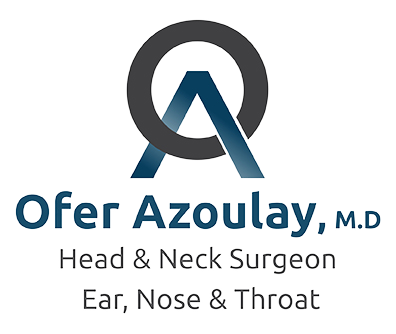Advancing Medicine:
Microvascular Head and Neck Reconstruction
Within the realm of head and neck surgery, few procedures are as intricate and advanced as microvascular reconstruction. This sophisticated surgical technique stands as a testament to human medical ingenuity and the unwavering pursuit of restoring both form and function.
Microvascular reconstruction, in essence, involves a remarkable feat—harvesting a composite tissue piece from other parts of the body, such as the legs, arms, or trunk, and relocating it to the head and neck region. This tissue marvel comprises elements like bone, skin, fat, and muscle, meticulously orchestrated to rebuild vital structures like the jaws, tongue, facial skin, throat, and voice box. These reconstructions serve as the beacon of hope following cancer resection surgeries or traumatic injuries.
The core principle bears resemblance to organ transplantation, but with a remarkable twist—we harness the patient’s own body to provide the reconstructive tissue. Once the transplanted tissue finds its new home in the head and neck, a delicate dance begins: the blood vessels that nourish the tissue transplant are meticulously reconnected to fresh blood vessels in the neck. These connections are nothing short of intricate, often involving blood vessels as slender as 1 to 3 millimeters in diameter. This precision, conducted under the watchful eye of a microscope, has earned the technique its esteemed title of “microvascular surgery.”
In the era of modern medicine, specialists employ cutting-edge tools and techniques to elevate the art of microvascular reconstruction. Think computer modeling, 3D printing, and custom implant fabrication, all of which contribute to not only enhanced aesthetics but also improved functional outcomes, while simultaneously streamlining surgical processes.
Before embarking on this transformative journey, patients undergo a thorough evaluation, considering functional impact and planning for rehabilitation. The specifics of reconstruction are tailor-made to meet the patient’s unique needs, bridging the gap between functional and aesthetic deficits, and aligning with individual expectations and preferences.
Contemporary head and neck reconstructions have evolved to a point where they are seamlessly integrated into a single surgery. This means that tumor resection is swiftly followed by immediate reconstruction. Mastering this one-stage procedure requires a dual expertise in oncological resection surgery and reconstruction. Microvascular free flaps stand as the gold standard for addressing head and neck defects post-ablative cancer surgeries. Their execution demands an exceptional level of expertise, a skillset mastered by only a select few in the field.
In the realm of microvascular head and neck reconstruction, we are not just restoring physical structures; we are rebuilding lives, one intricate connection at a time.
More about our procedures
Dr. Azoulay offers a personal and holistic care for his patients that is characterized by service, quality and safety

Frequently Asked Questions
Different types of head and neck cancers include:
- Oral cavity: mouth, tongue
- Oropharyngeal: throat, back of the mouth
- Nasal Cavity: nose
- Paranasal sinus: sinuses, openings near the nose
- Nasopharyngeal: behind the nose, upper throat area
- Laryngeal: voice box
- Hypopharyngeal: voice box, lower part of the throat
- Salivary glands (Parotid, submandibular, minor salivary glands)
- Thyroid
- Skin cancer
- Lymphoma
There’s no such thing as a “standard” set of symptoms. Depending on the location and type of cancer some people experience very few warning signs until their cancer has started to spread, while others notice something out of the ordinary right away.
Many symptoms of head and neck cancer can also be caused by other, less serious conditions, such as sinus or throat infections. Even though there’s a good chance that something other than cancer is causing your symptoms, you should still bring them to the attention of a medical professional and discuss the next steps.
Symptoms of laryngeal and hypopharyngeal cancer
Laryngeal cancer develops in the voice box, while hypopharyngeal cancer develops in the lower part of the throat. The most common symptoms of both cancers include hoarseness, constant coughing, difficulty swallowing and a sore throat that does not go away.
Symptoms of oral cancer
Oral cancer can develop anywhere in the mouth, including the lips, cheeks, gums, tongue and palate (roof). The most common symptoms are sores and swollen spots inside the mouth, red or white patches on the lips, difficulty moving the jaw or tongue, loss of otherwise healthy teeth and a feeling that something is stuck in the throat.
Symptoms of nasal cavity and paranasal sinus cancer
Nasal cavity cancer develops in the small passageway just behind the nose. Paranasal sinus cancer develops in the small, air-filled bubbles around the nasal cavity. These cancers typically cause facial pain, nosebleeds, post-nasal drip, watery eyes, changes in vision and nasal congestion that doesn’t go away.
Neck Lump
Neck lump could be simple, swollen, and reactive lymph node. However, a persistent neck mass, that does not disappear within few weeks, even without symptoms, should be evaluated to rule out cancer.
They are as varied as the cancers themselves. Much depends on location, overall health, and cancer staging, or how developed the lesion is and if it’s spread to other areas of the body. Surgical excision is a common treatment as is laser therapy, radiation, chemotherapy, and targeted therapy. Dr. Azoulay fully coordinates care plans from initial diagnosis to treatment to follow-up care.
To schedule an appointment, please call the office at (718) 270 1498.
We participate with most health insurance plans. Please call our office staff at (718) 270 14978 for specific questions.
If your insurance plan requires you to obtain a referral prior to a specialty visit, then contact your primary care doctor first. If your plan allows a specialty visit without a referral, then please call us at (718)270 1498 to arrange your visit.
When you schedule your appointment, the staff will ask you to have your records faxed to our office as soon as possible. This is requested so that we can accordingly schedule those patients in need of an urgent visit. On the day of your visit, you may need to bring original or copies of your radiology studies – for example, CAT scans, MRI, sonograms, or PET scans.
To obtain your written reports and records, you (as the patient) must request that they be sent to our office directly. For originals or copies of radiology films, you’ll need to request them from the radiology office that performed the study(s). There may be a fee associated with this, depending on the radiologist’s policies. If you have had your studies arranged by our office, you do not need to get your films, since we can access them.
Dr. Azoulay operates at New York Presbyterian Methodist Hospital, Maimonides Medical Center, and SUNY Downstate Medical Center. Depending on your condition and preference a surgery will be scheduled to one of the hospitals located in Brooklyn.
CONTACT
1) 185 Montague St 5th FL , Brooklyn, NY 11201
2) 376 6th Avenue , Brooklyn , NY , 11215
718-780-1498
